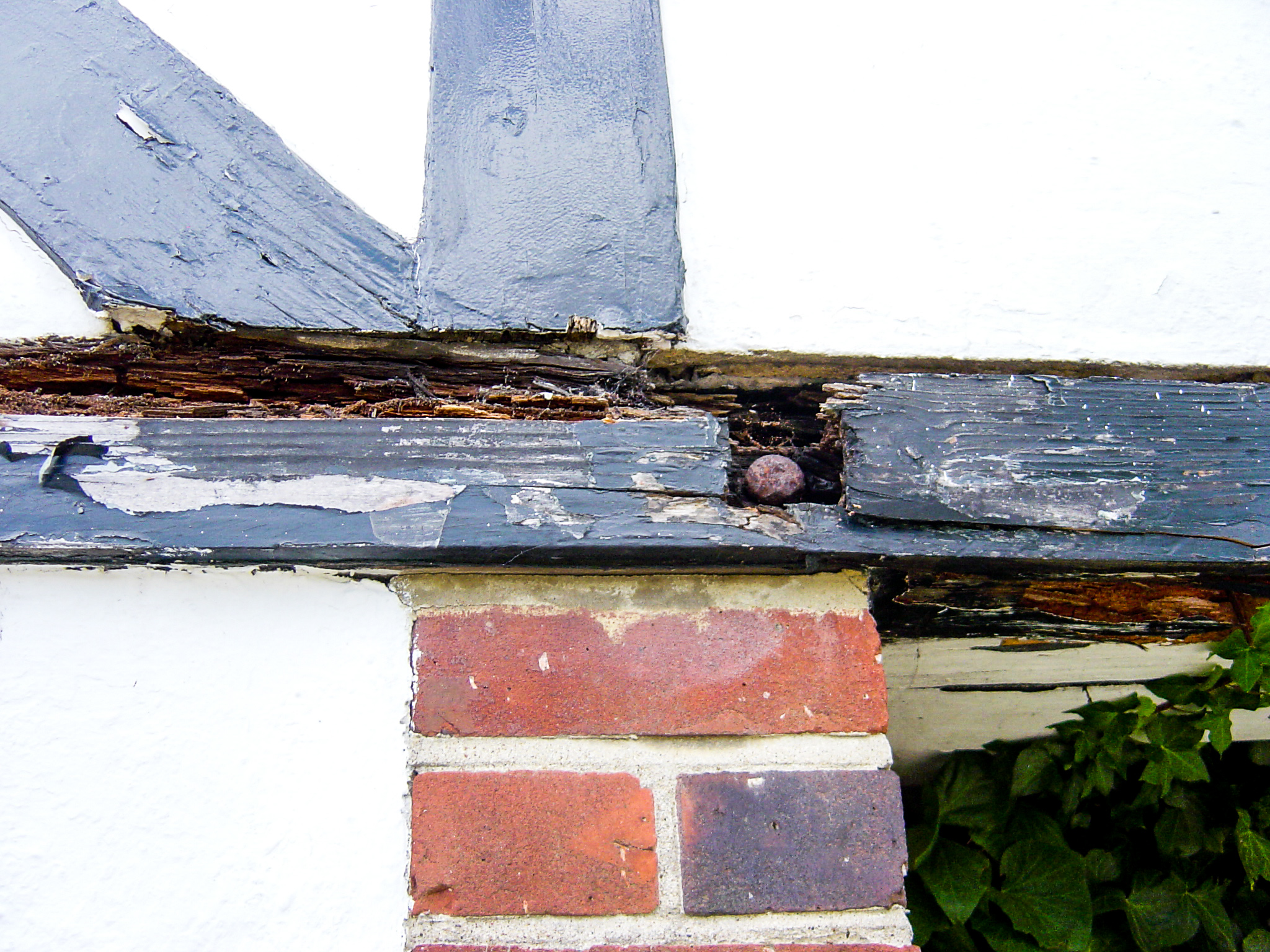Timber Report
Timber Reports deal with fungal decay and wood boring insects, both of which can cause serious damage to both the structural timber and non-structural timber in buildings.
Fungal Decay
Fungal decay is more commonly known as 'dry rot' and 'wet rot'. Dampness, combined with a lack of ventilation, creates ideal conditions for fungal attack.
Dry rot
(Serpula lacrymans) requires a moisture content over 20% for the spores to develop. Fine grey strands (hyphae) of the fungus spread over and through wood and other materials. As it develops, fruiting bodies (sporophores) form and these give off spores which spread the fungus further. Timber attacked by dry rot becomes dry and brittle with cuboidal fractures. It is usually so weak that it can be broken up by hand.
Wet rot
(Coniophora puteana) requires a very high moisture content of 40% to 50% and will become inactive if the moisture content is lowered. It does not usually spread over other materials. It leaves the timber a dark brown colour with small cuboidal splits or longitudinal cracks.
The first steps in treating fungal decay are to remove the sources of damp which are 'feeding' the outbreak and to carry out exposure works to determine the full extent of the attack. Repairs or replacement of badly affected timbers may be necessary. Following this it is usual to treat the timbers with an approved fungicide in order to prevent a future outbreak.
Wood Boring Insects
Wood boring insects, commonly, called 'woodworm', come in a number of varieties and sizes from 3mm to 25mm long. They lay their eggs on or in the timber and the larvae that hatch from these feed on and bore through the timber causing the damage. It is not at all unusual to see woodworm holes which are old and the timber is no longer being attacked, activity is usually identified by looking for fine powder left by active larvae.

Treatment of active attack usually consists of brushing or spraying insecticides onto the timbers. Quite severe attack is required to cause a significant weakness to structural timbers so it is not unusual for timbers with woodworm holes present to be considered as structurally satisfactory. Badly weakened timbers may require repair or replacement.
A typical timber report will include an inspection of all readily accessible timbers and recommendations for any necessary further exploratory works, repairs and treatment.
Damp and Timber Reports are often carried out by the same Specialist.
If you require a Damp and Timber Report, please use the link below to get instant contact details.
